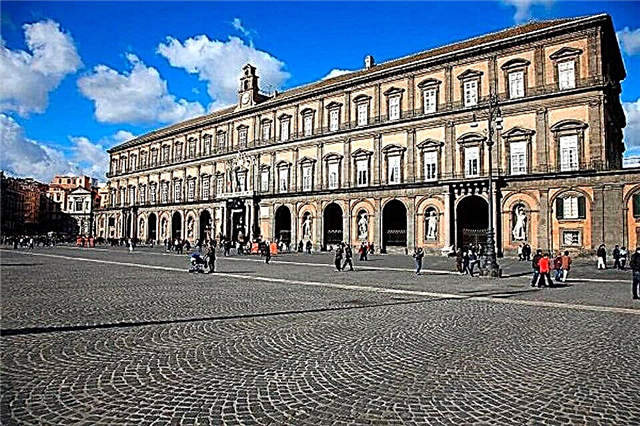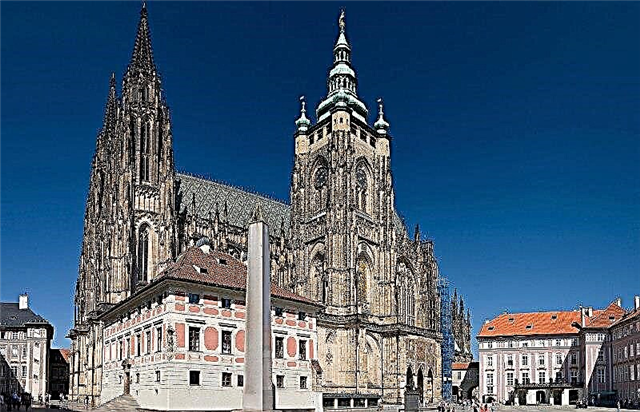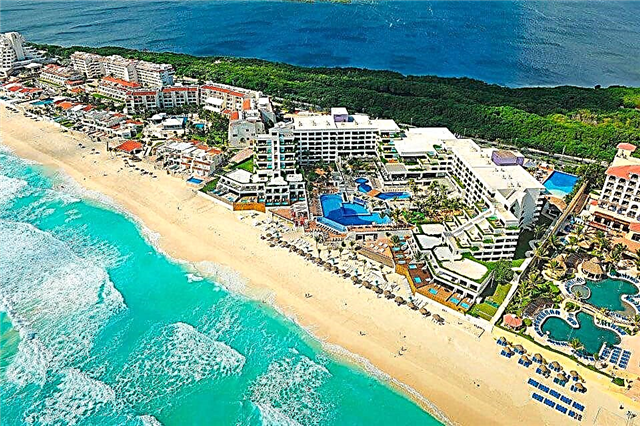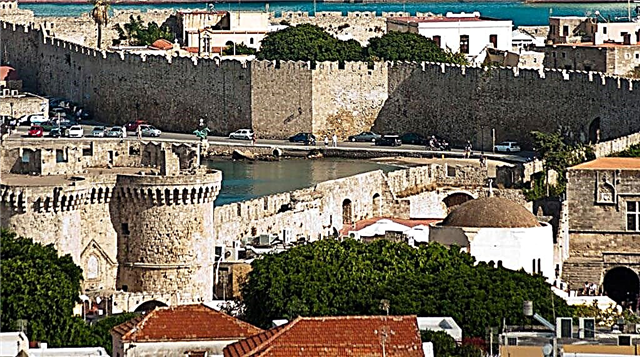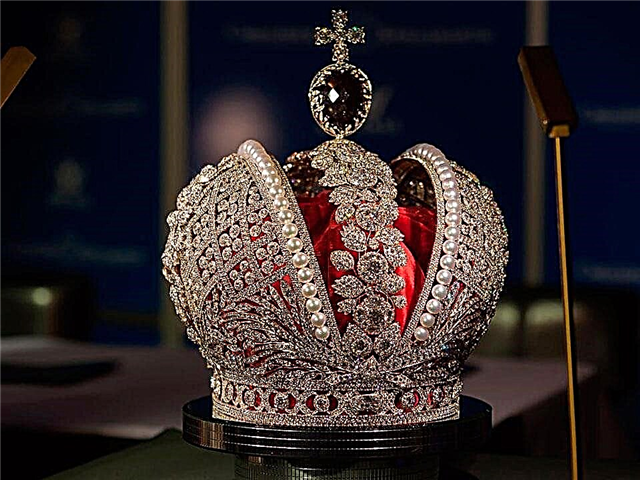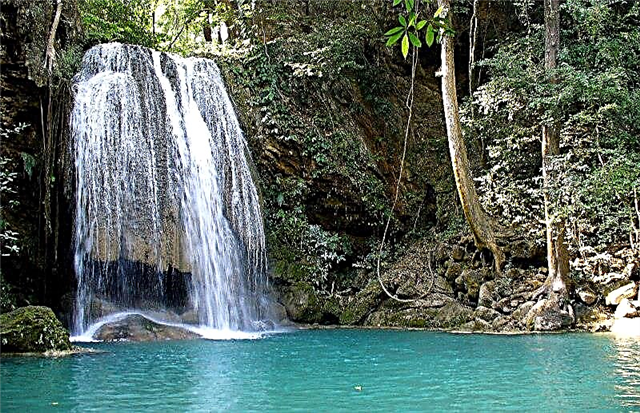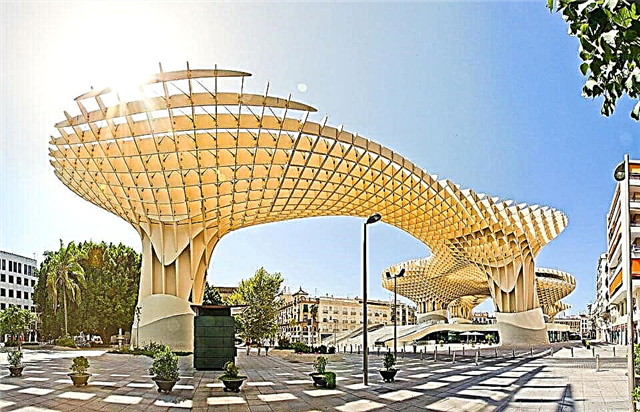One of the most famous Spanish cities - Seville - receives many tourists every year. Some come here for a long time, while others can devote only a few hours to world famous attractions. What to see in Seville in 1 day on your own? Depends on your preference. These can be old churches, a Flamenco museum, theaters or an arena where bullfights are held. Or maybe you are interested in the architectural heritage of the Moorish period - the Golden Tower? It is possible that you just want to stroll along the embankment, walk through the squares, look into cafes and shops…. There are dozens of sights here. Let's talk about the most interesting ones.
Guadalquivir river embankment
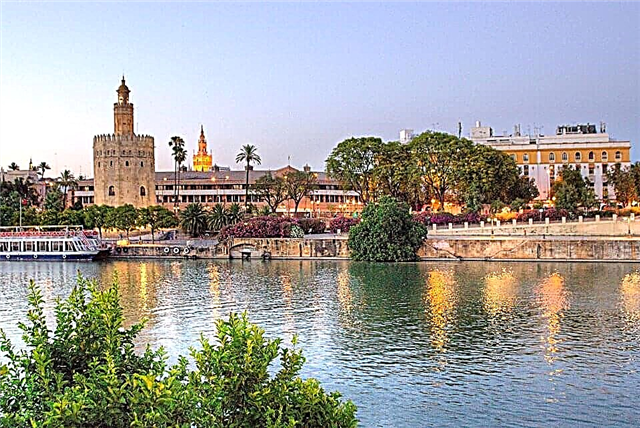
Perhaps, it is with such a walk that you should start your acquaintance with the sights. It is worth drawing a parallel with St. Petersburg - when you look at the city from the side of the Neva, a completely special, enchanting panorama opens up in front of you. So it is here. You just need to prepare for such a walk - go on the road in the morning or in the evening, when it's not too hot, put on comfortable shoes. The embankment is very long - only in the historical center of the city its length is almost 5 km. During the walk, you will walk along the road, then descend the steps to the water.
You can rent a bike - there are also special paths for this transport. And, of course, don't forget your camera. After all, you will see many sights along the way. You will see a view of the arena where bullfights take place, you can admire the Golden Tower and the famous Generation 27 fountain. Also, from an unusual perspective, you can look at the buildings of the university and the theater named after Lope de Vega. The walk can end in the beautiful Maria Luisa Park.
Bullfighting arena "Maestransa"
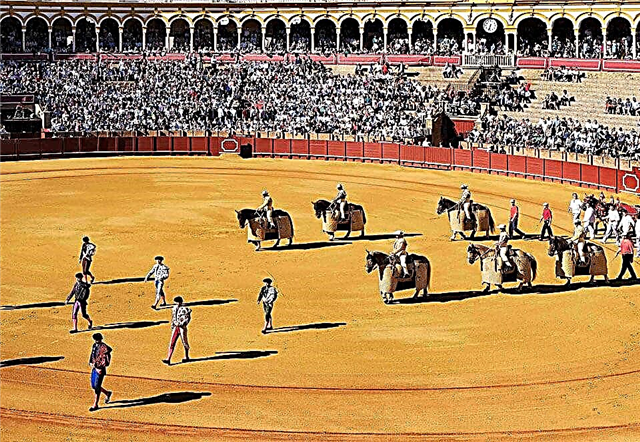
Bull fighting has always been very popular in Spain. Initially, arenas had a square shape, but in some cases it was not very convenient. Not all bulls turned out to be so brave that they were ready to fight with the bullfighter. Often, the animals simply huddled in a corner, and it was not easy to lure them out of there. Modern arenas are circular. "Maestranza", built in the middle of the 18th century, occupies, as it were, an intermediate place - the shape of its arena is oval.
Another fact related to this place. It was here that the matador fought the bull for the first time on foot. Usually a person entered such a fight while sitting on a horse. It is worth exploring the arena, even if you are not a fan of this kind of entertainment. By itself, "Maestransa" is very beautiful, the royal box is arranged here. You can also look into a thematic museum - it is located nearby - there are many exhibits related to bullfighting. There is even a cloak on which the famous Pablo Picasso left his signature.
Maestranza theater
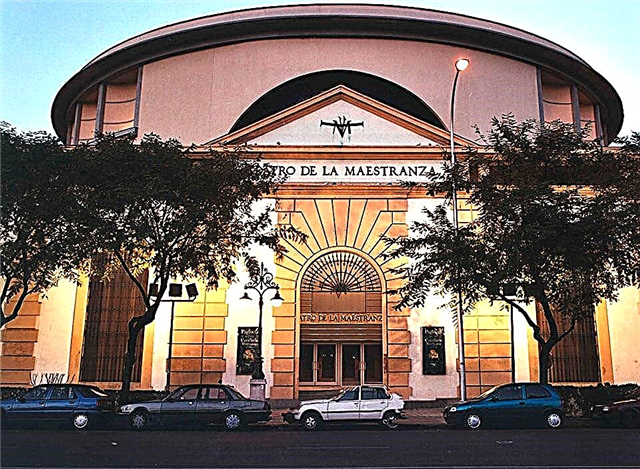
It is here that the Royal Symphony Orchestra rehearses and gives concerts. It is no coincidence that the theater is one of the most famous in Spain, and it is quite difficult to get here. You have to take care of the tickets in advance. Although there are many places here, approximately 1800 spectators can enjoy the performance at the same time. Another important advantage of the theater - in order to fully convey to the audience all the beauty of musical works - the latest technologies are used.
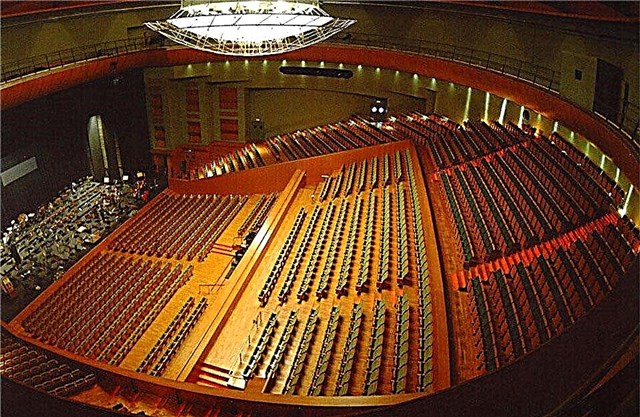
Rarely does a European theater boast such equipment. As a result, the most complex productions can be presented here, the audience - even experts - will fully appreciate them. The place where the theater stands was chosen very well - it is the bank of the Guadalquivir River, a historic district. There are hotels, cafes, shops nearby. So the visit to the opera can be combined with other pleasures, such as shopping.
Torre del Oro
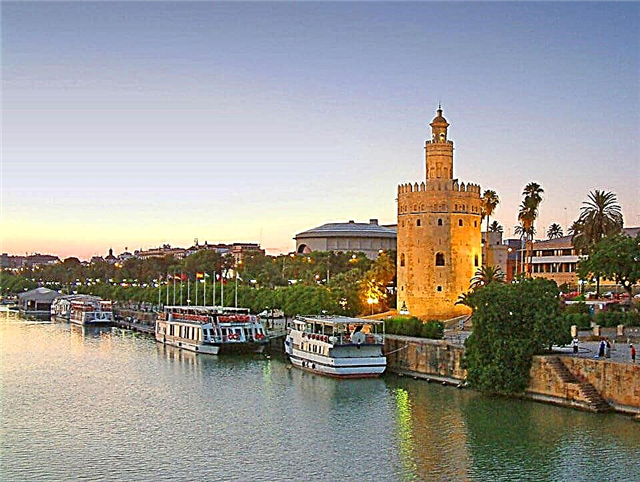
One of the most famous landmarks in Seville. The Golden Tower was built at the beginning of the 13th century. It is an architectural monument of the Moorish period. The original purpose of the tower was to serve as a lighthouse, so they put it on the river bank. Behind it were the walls that surrounded the city. A chain was thrown across the river, and boats were attached to it. So people moved to the other side. In later times, the tower played the role of a prison, gunpowder was also stored here, and even offices were located here.
A devastating earthquake struck in the 18th century and the Torre del Oro was rebuilt in the late 19th and early 20th centuries. Today there is the Maritime Museum, you can climb to the very top - to the observation deck. It is worth mentioning one more point - the tower got its name, probably due to the fact that it was built of bricks made of white clay. Illuminated by the sun or the moon, they shone gold. The Golden Tower can be seen in many films.
Hospital of mercy
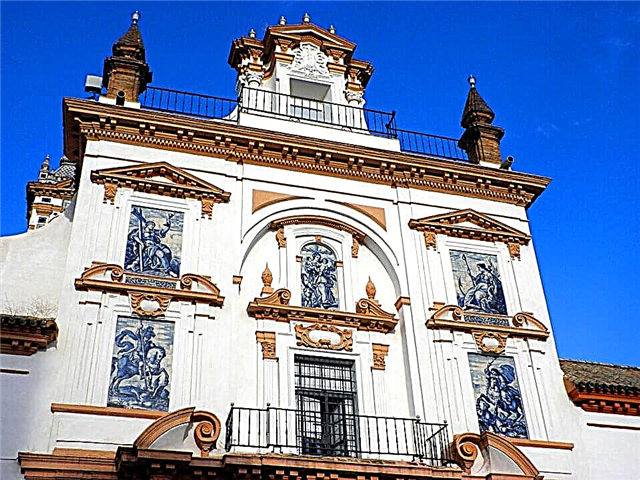
A lovely medieval building that has been remarkably well preserved. The idea of creating a hospital where the poor would be treated came from Miguel de Manara. In the middle of the 17th century, he proposed to the monks to establish such a hospital. Today, his statue is installed in the garden in front of the hospital. It is significant that before this man led a rather unbridled life, his mistresses were innumerable, and it is even believed that he served as the prototype of Don Juan. But then Miguel had a vision during which he saw his own funeral.
Then he decided that he would devote the rest of his life to charity. It is not known how long the construction would have taken had it not been for the support of the king. It was his donations for a good cause that allowed the construction of a fairly spacious building next to the city church. The hospital immediately became very popular. Within a few months, the lack of places began to be felt. Then the architect Francisco Ruiz de Escalon got down to business.
He managed to practically double the area of the hospital and decorate its facade so that it would look organically next to the church. Today, many people want to admire this place. On the tiles at the entrance you can see the symbolic Faith, Hope, Love, as well as Saints George and Jacob. The courtyard is elegantly decorated with beautiful fountains. In the very building of the hospital there is an exhibition of valuable paintings.
Archive of the Indies
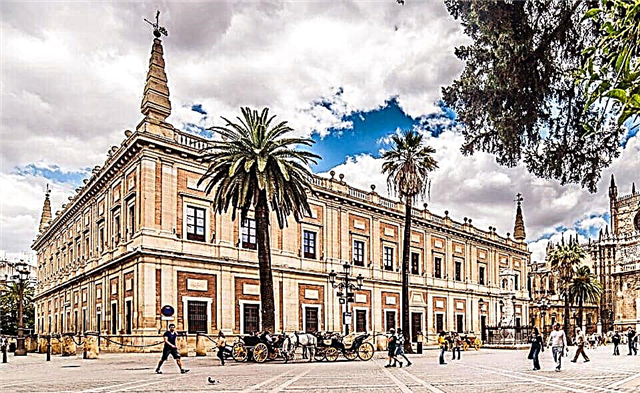
While scholars will undoubtedly admire the contents of this archive, tourists will first of all admire the beautiful building. It contains many documents related to the history of the Spanish Empire, which existed in the lands of America and the Philippine Islands. The building is also a magnificent example of the Renaissance.
The project was developed by the architect El Escorial Juan de Herrera at the end of the 16th century. This house was intended for the local guild of merchants. The architect included patios and balustrades along the edges of the roof. For several more decades, the building was decorated in every possible way. The archive was moved here at the end of the 18th century. There are so many documents that the length of the shelves is no less than 9 km, and if you count the pages, there are about 80 million of them.
Cathedral
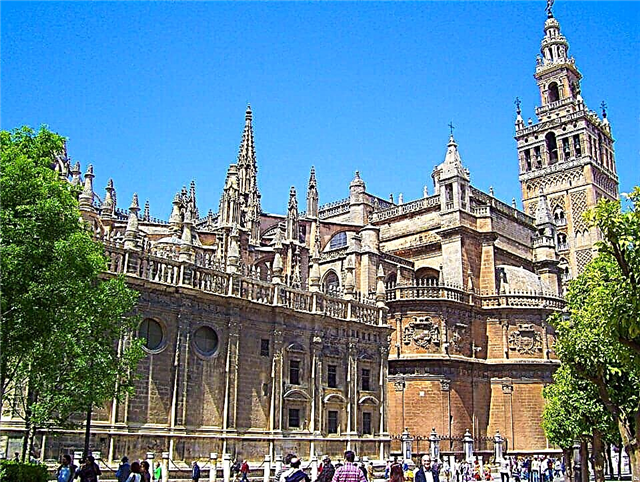
This is a real gem of Seville, one of the largest basilicas in the world. The construction of the cathedral began at the beginning of the 15th century, and the process itself stretched out for 4 long centuries. We can also mention the fact that there used to be a large mosque on the site of the cathedral. The basilica was erected in the neo-Gothic style, its length exceeds 100 m, and its width is more than 70 m. But, of course, you must definitely go inside. There are many treasures stored there. Starting from unusual lattices and ending with icons.
Also here are the masterpieces of painting and architecture. Guests come to the cathedral and then to bow to the ashes of Christopher Columbus - he rests here.Also buried here are other people who played an important role in the history of Spain. There are 9 gates leading to the cathedral. When looking at the architectural structure from the inside, be sure to go to the Chapter Hall to see the famous sculptures.
Giralda tower
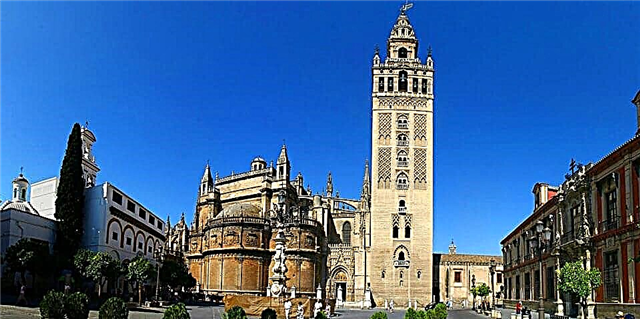
Today it is one of the best viewing platforms in the city. But the tower has an impressive history. Its construction began in the 12th century, and since then it has been an example of Moorish architecture. At that time, the tower was decorated with gilded balls. When the rays of the sun fell on them, they shone and were visible at a great distance. Later, when Seville passed into the hands of the Spaniards, the balloons were removed, the mosque was replaced by a cathedral, and an observatory was built at the top of the tower.
In the middle of the 16th century, a belfry was built at the top, the height of the tower began to reach almost 100 m. It was crowned with a weather vane. From which its name came. In Spanish, "giralda" means "weather vane". Despite numerous alterations, the tower looks surprisingly organic, like a real work of art. Tourists do not miss the opportunity to climb it to admire the panorama of the city from above.
Alcazar
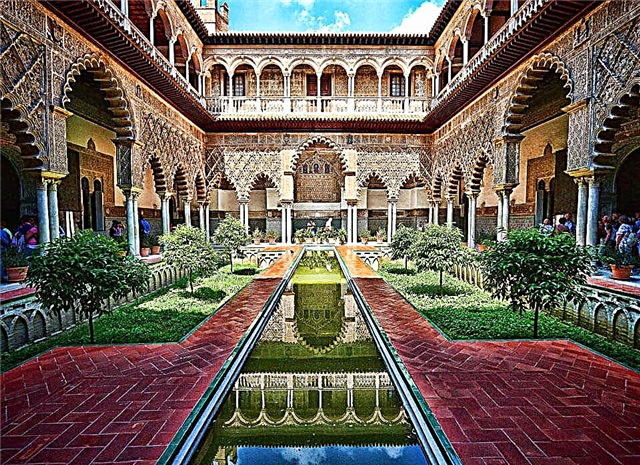
This palace, which later became the residence of the Spanish kings, began to be built in the 10th century, when Emir Abderrahman III ruled. The palace turned out to be so beautiful and poetic that it was called “the eternal shelter of spring”. Today, little has survived from its original appearance. Most of the halls belong to a much later period - 14-16 centuries. There are many courtyards here, in fact, the premises are located around them.
In one of the halls, as it was established, official receptions took place, there is also the Yard of Dolls - its walls are decorated with ornaments resembling figures. The Courtyard of the Girls is named so because of the legend - a hundred beauties were brought here so that the emir could select the best as a tribute for the Caliph of Cordoba. You can also visit the Hall of Justice and the Hall of the Hunt.
The guide will tell you a lot of interesting facts related to them. The gardens surrounding the Alcazar are also delightful. Take time to walk around them. Orange trees bloom here, important peacocks walk around, spreading their magnificent tails. Also, you can always meet artists here. The Alcazar is of particular interest to fans of the film "Game of Thrones" - many scenes of the film were filmed here.
Flamenco Dance Museum
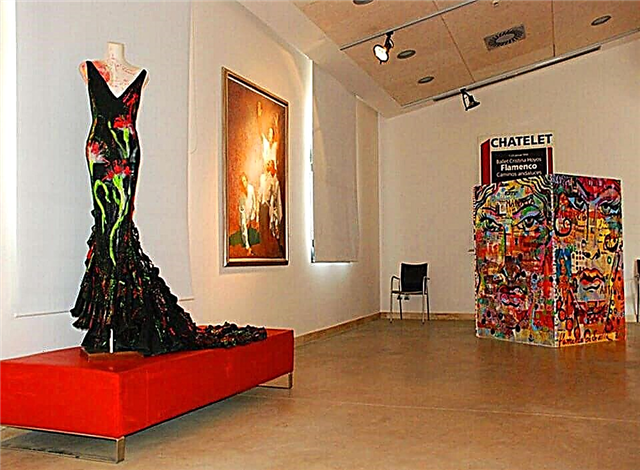
Incendiary flamenco dance is a real intangible cultural heritage of Spain. This distinctive dance has many fans all over the world. And it originated in the 18th century in the villages of Andalusia, and ordinary peasants were the first to perform it. Since then, many interesting facts have appeared in the history of flamenco. You can find out about them in the museum, which is located in the Santa Cruz quarter in an old house. The famous dancer Christina Hoyos became the founder of the museum.
When purchasing a ticket, it is better to take a combined one. It will allow you not only to look at the exhibits, but also to see a bright show - it is held here three times a day and lasts about an hour. In the museum you will learn a lot of interesting things about flamenco, look at the costumes of dancers and their partners, admire castanets, see portraits, sculptures and much more.
If you have time, you can attend a master class and master the basics of beautiful dance yourself. The hall where the show is held is small and always full, so take care of your tickets in advance. The performance is so bright and exciting that you can come here even with children - they will definitely not get bored.
Metropol Parasol
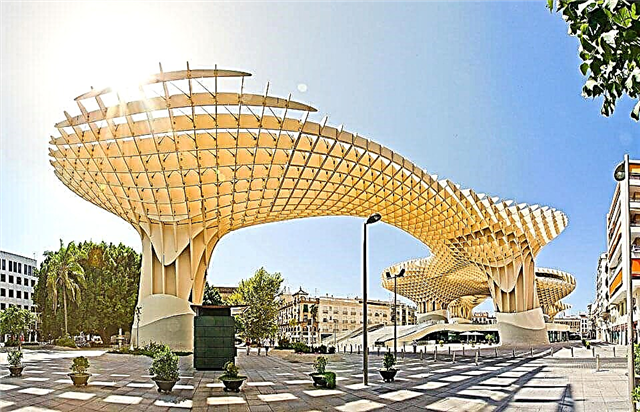
This architectural masterpiece seems to have come from the future. It is located on the Incarnation Square, this is the center of the city. In the 90s of the last century, it was decided to reconstruct the square; in the process, traces of an ancient Roman settlement were discovered. To preserve it, it was decided to abandon the idea of equipping a parking lot here, but to build something else.
The winner was the Metropol Parasol project, authored by Jurgen Mayer. However, due to material problems, construction was delayed, and its cost increased. The highest quality birch timber was imported from Finland. For a long time we could not find and approve a suitable glue. Only by 2011, “Seville mushrooms” appeared on the square - this is how they first dubbed the new building, and then officially. 6 umbrellas made of concrete and wood, 26 m high, are intertwined with their “hats”.
"Mushrooms" occupy an impressive area of 5000m2. Inside there are cafes, shops, a market where you can buy everything - from seafood to the freshest fruits and vegetables. Instead of an underground car park below, there is now an archeology museum. You can go down here and admire the mosaics and paintings. There is an observation deck at the very top of the building. You can go up here by high-speed elevator and look at the panorama of the city.
Basilica Jesus del Gran Poder
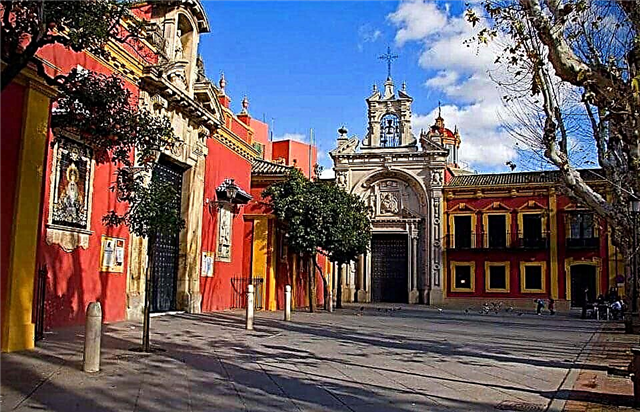
This Catholic Church is small in size. Located in the San Lorenzo area. The project was carried out by Alberto de Horta and Antonio Delgado. The basilica was built in the neo-baroque style. Once inside, guests can remember the pantheon in Rome. There is also an elaborate carving, and there is also a beautiful altar.
A lot of people come here to worship the image of Christ Señor de Sevilla, which dates back to the early 17th century. It is especially crowded here on Good Friday. After all, this image is no less popular with the Spaniards than the Holy Virgin of Makarena. With lit candles, believers turn to the Lord, ask Him for help.
Duenas Palace
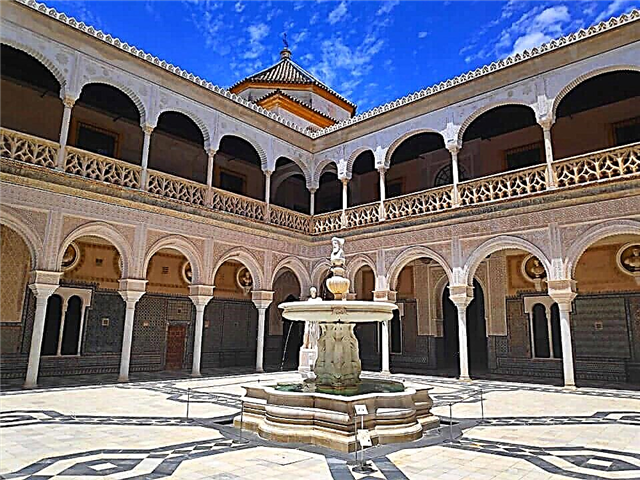
This palace was built in the middle of the 15th century. And he received his name in honor of the monastery of Santa Maria de las Duenas. The palace has a rich history. It was built by order of the Pineda family, but was soon sold to the de Ribera family, as the owners needed funds to ransom a relative from the Moorish captivity. The new owners changed the appearance of the palace, giving it the features of the Renaissance. Later, the building became the property of the Dukes of Alba.
It should be mentioned that the poet Antonio Machado was born in the palace (his father served as a caretaker here), and Baron Holland also lived here, who wrote a book about Lope de Vega. In the 18th and 19th centuries, the palace underwent renovations. Today you can see different styles here - Gothic, Moorish, Renaissance. A very beautiful room with an octagonal ceiling decorated with gold. The patio and the fountain have been preserved. Very rare plant species grow in the gardens.
You can also see the chapel of the 15th century, however, rebuilt. It is believed that it was here that the marriage of Amerigo Vespucci and Maria Cerezo was concluded. Also in the palace at one time the Duchess of Alba and Alfonso Diez Carabantes were married. Today, visiting the Duenas Palace, guests will see many antiques, luxurious furniture, tapestries, tableware, and a rich collection of paintings.
Basilica Macarena
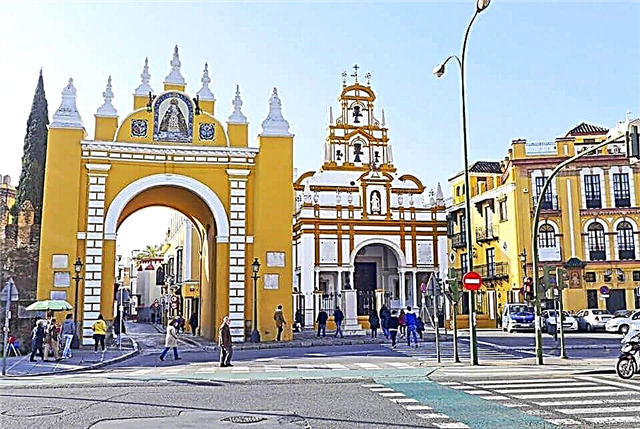
This attraction cannot be classified as a monument of antiquity, and yet it is very popular with tourists. The basilica is painted in traditional colors - white with ocher. Inside it is a shrine - an ancient image of the Most Pure Virgin of Makarensk, the name of the icon painter has not been established. But the Mother of God is called the "Queen of Seville". Her mantle is covered with gold and precious stones, in her hand the Virgin Mary squeezes a white handkerchief.
And, of course, nowhere else will you see the Blessed Virgin in earrings. But this is not surprising here. During Holy Week, guests from different cities of Spain come here. The image is taken out of the temple and carried along the main city streets. The procession turns out to be very crowded, believers repent of their sins. It may seem strange, but the temple also contains museum exhibits related to bullfighting.
Torero come to ask the Mother of God for good luck, bring her gifts. Some have even been honored to carry a stretcher on which the image is mounted. The project of the church was carried out by Aurelio Gomez Meliano, and it was built at the end of the 40s of the last century. Gradually, she gained more and more popularity.Guests admire the beautiful architecture, bow to the miraculous image, get acquainted with the museum collection.
Alameda de Hercules
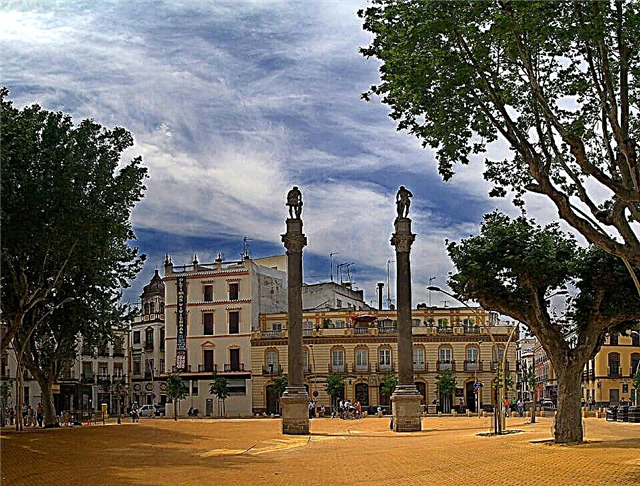
You can end your acquaintance with the city right here. In the second half of the 16th century, a public garden was laid out here. The name comes from the rows of white poplars. Even earlier, there was a branch of the river, but at first it was cut off by a dam, and then the area was specially drained. The swampy pond has disappeared, replaced by canals and fountains. 4 columns were installed, and a couple of them used to belong to an ancient Roman temple. Sculptures were raised upstairs.
In the 19th century, this garden was a very popular place, especially among the nobility. After the civil war, on the contrary, this area was considered the poorest, there was prostitution and drug trafficking. At the beginning of the 21st century, Alameda began to be restored. White poplars were planted again, benches and fountains appeared here. There are also sights here - the House of Sirens, a chapel, the building where Gustavo Adolfo Becker was born. Today Alameda is the center of the city's nightlife. There are many bars, pubs, discos here. For example, Tino's bar is very popular.
From reviews:
“Here you can try those Spanish dishes that we have only read about before. For example, oxtails with French fries and gazpacho, salads, which are just a huge mountain of vegetables. Everything is very tasty and, most importantly, the prices are more than democratic "
So it's worth coming here for lunch or dinner, how can you visit Seville and not try the national Spanish food? And here everything is tasty and inexpensive.
Of course, it is unlikely that you will be able to inspect everything in one day, but how can you manage to see at least what interested in the description? It is unlikely that green sightseeing buses will help you, since they only make 4 stops, and the audio guide there is not of the best quality. You can order a personal tour with a Russian-speaking guide. If your plans include not a sightseeing tour of the city, but visiting specific places - for example, you want to see the Alcazar and Duenas palaces - you should immediately go there. And only later, if you have enough strength, you can watch something else, or just sit in a cozy cafe, admiring the panorama of the city.
As a rule, those who came here for a short time want to come back again to get acquainted in more detail with the sights of the ancient Spanish city. Let this desire come true!

